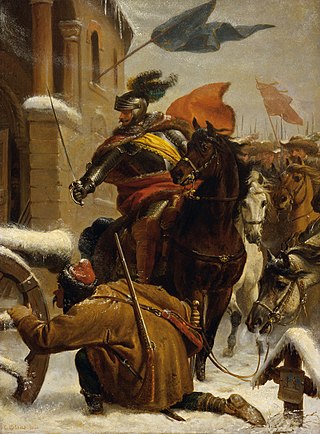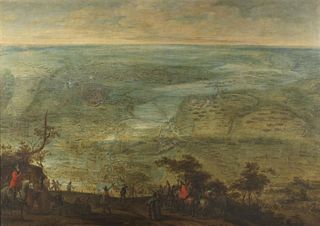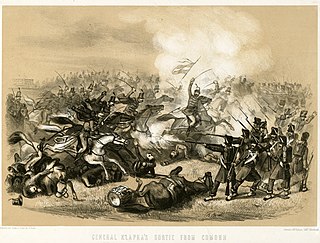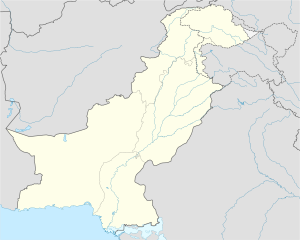
The Battle of Lundy's Lane, also known as the Battle of Niagara, was fought on 25 July 1814, during the War of 1812, between an invading American army and a British and Canadian army near present-day Niagara Falls, Ontario. It was one of the bloodiest battles of the war, and one of the deadliest battles fought in Canada, with approximately 1,720 casualties including 258 killed.

The Battle of Beaver Dams took place on 24 June 1813, during the War of 1812. A column of troops from the United States Army marched from Fort George and attempted to surprise a British outpost at Beaver Dams, billeting themselves overnight in the village of Queenston, Ontario. Laura Secord, a resident of Queenston, had earlier learned of the American plans from several Americans billeted at her house and had struck out on a long and difficult trek to warn the British at Decou's stone house near present-day Brock University. When the Americans resumed their march, they were ambushed by Kahnawake and other native warriors and eventually surrendered to a small British detachment led by Lieutenant James FitzGibbon. About 500 U.S. troops, including their wounded commander, were taken prisoner.

The Battle of Fort George was fought during the War of 1812, in which the Americans defeated a British force and captured Fort George in Upper Canada. The troops of the United States Army and vessels of the United States Navy cooperated in a very successful amphibious assault, although most of the opposing British force escaped encirclement.

The Battle of Apache Pass was fought in 1862 at Apache Pass, Arizona, in the United States, between Apache warriors and the Union volunteers of the California Column as it marched from California to capture Confederate Arizona and to reinforce New Mexico's Union army. It was one of the largest battles between the Americans and the Chiricahua during the Apache Wars.

The Battle of Longue-Pointe was an attempt by Ethan Allen and a small force of American and Quebec militia to capture Montreal from British forces on September 25, 1775, early in the American Revolutionary War. Allen, who had been instructed only to raise militia forces among the local inhabitants, had long had thoughts of taking the lightly defended city. When he reached the southern shore of the St. Lawrence River with about 110 men, he seized the opportunity to try. Major John Brown, whom Allen claimed was supposed to provide additional forces, did not appear as they had planned, isolating Allen and his men on the north side of the river.

The Battle of Fort Ontario was a partially successful British raid on Fort Ontario and the village of Oswego, New York on May 6, 1814 during the War of 1812.

The Battle of Tuttlingen was fought in Tuttlingen on 24 November 1643 between the French army in Germany led by Marshal Josias Rantzau, composed of French soldiers and the so called Weimarans or Bernhardines, German troops once in service of Bernard of Saxe-Weimar. They were defeated by the forces of the Holy Roman Empire, Bavaria and Spain led by Franz von Mercy. Technically, Mercy led a military force composed of his Bavarian army, supported by Imperial, Spanish, and Lorrainer troops. The French army was wiped out in a surprise attack in heavy snowfall along with French strategic gains since 1638. The French court suppressed the defeat and it remains largely unknown today, even among historians of the war.

The 12th Iowa Infantry Regiment was an infantry regiment that served in the Union Army during the American Civil War.
During the Seven Years' War, the Prussian-held town of Kolberg in Brandenburg-Prussian Pomerania was besieged by Russian forces three times. The first two sieges, in late 1758 and from 26 August to 18 September 1760, were unsuccessful. A final and successful siege took place from August to December 1761. In the sieges of 1760 and 1761, the Russian forces were supported by Swedish auxiliaries.
The Anglo-Marri Wars is the name given to three major military conflicts between the Marri Baloch tribesmen and the British Empire in the independent eastern Baloch tribal belt. The conflicts took place in the 19th and 20th centuries, specifically in 1840, 1880, and 1917.

The siege of Saint-Omer was a siege in the Thirty Years' War in which a French army under Gaspard III de Coligny, Maréchal de Châtillon, laid siege to the Flemish city of Saint-Omer, defended by a small garrison in command of Lancelot II Schetz, count of Grobbendonck. Despite several initial successes in the capture of the minor forts around Saint-Omer, on the night of 8/9 June a Spanish relief army under Thomas Francis, Prince of Carignano, surprised Châtillon's troops and established a small fort in the middle of the French lines. An entire army corps under Maréchal de La Force was ordered to move towards Saint-Omer to support Châtillon siege, but on 12 July a further Imperial-Spanish force commanded by Ottavio Piccolomini entered Saint-Omer, resolving the French marshals to withdraw.

The siege of Figueras, which lasted from 10 April to 19 August 1811, saw the Spanish garrison of Sant Ferran Castle led by Brigadier General Juan Antonio Martínez defend against an Imperial French force commanded by Marshal Jacques MacDonald and his deputy Louis Baraguey d'Hilliers. Martínez and his men held out much longer than expected but were eventually starved into surrendering the fortress, which was near Figueres. The action occurred during the Peninsular War, part of the Napoleonic Wars.
The siege of Mora or siege of Moraberg, between Allied and besieged German troops, took place from August 1914 to February 1916 on and around the Mora mountain in northern Kamerun during the Kamerun campaign of the First World War. After more than a year of siege German forces on the mountain surrendered, following the escape of many German troops to the neutral Spanish colony of Río Muni. It was the second longest siege of the war, behind the Siege of Medina.
The siege of Lydenburg was a siege carried out by South African Republican forces on British-occupied Lydenburg, between January and March 1881 during the First Boer War. Despite fierce British resistance, the Boers reclaimed the town following the British defeat at the end of the war. The siege lasted 84 days.

The Maltese Light Infantry was a light infantry battalion of the British Army which existed from 1800 to 1802 in Malta, then a British protectorate. It consisted of eight companies of Maltese soldiers, and it saw action in the French Revolutionary Wars. It was the second Maltese unit in British service, after the Maltese Cannoneers.

The Danish Auxiliary Corps was a corps of 7,000 Danish soldiers sent to fight with William of Orange who was at war in Ireland. Disappointed with his alliance with France's King Louis XIV, Christian V of Denmark–Norway in 1689 entered into a treaty of military assistance with King William III of England. The corps was transported to Ireland, fighting against the Jacobites, participating in the battles of the Boyne and Aughrim, as well as the sieges of Limerick, Cork, Kinsale, Athlone, and Galway. In early 1692 the corps was transported to Flanders for future service in English pay.

The invasion of the Spice Islands was a military invasion by British forces that took place between February and August 1810 on and around the Dutch owned Maluku Islands also known as the Spice Islands in the Dutch East Indies during the Napoleonic wars.

The Battle of Riggins Hill was a minor engagement in western Tennessee during the American Civil War. A Confederate raiding force under Colonel Thomas Woodward captured Clarksville, Tennessee, threatening Union shipping on the Cumberland River. Several Union regiments led by Colonel William Warren Lowe advanced from nearby Fort Donelson and drove off the Confederates after a struggle lasting less than an hour. The action occurred during the Confederate Heartland Offensive but only affected the local area.

Operations against the Marri and Khetran tribes was the British name for a punitive expedition carried out against the Marri and Khetran tribes of Balochistan, British India between February and April 1918. The Marri rose against the British authorities around 18 February, encouraged by rumours that the British were short of manpower due to the First World War. British attempts at conciliation were repulsed and, on 20 February, a major attack was made by 1,000 – 3,000 Marri upon the British post at Gumbaz. This attack was repulsed by a much smaller British force that inflicted heavy losses upon the Marri. A subsequent withdrawal of British forces from Kohlu and its occupation by the Marri led the Khetrans to join the rising. The town of Barkhan was occupied by Marri-Khetran forces and raids were made upon villages in the Sibi and Loralai districts; railways in the area were also attacked.

The Fourth Battle of Komárom was fought in 30 July and 3 August 1849 between the Hungarian garrison of the fortress of Komárom led by General György Klapka and the besieging Austrian army led by Lieutenant field marshal Anton Freiherr Csorich von Monte Creto. Thanks to the capturing, by a Hungarian detachment of Hussars, of a statement containing the number of the besieging Austrian II. corps, Klapka understood, that he actually has numerical superiority over the besiegers. So in two sorties made on 30 July and 3 August he managed to crush their siege on the northern, then also on the southern section of the fortress, chasing them towards West, and causing them heavy losses. Thanks to this victory Klapka liberated the region between Komárom and Győr, planning to attack Austria, when he learned about the surrender of the Hungarian main troops from 13 August, and as result of this, he retreated with his troops in Komárom.


















